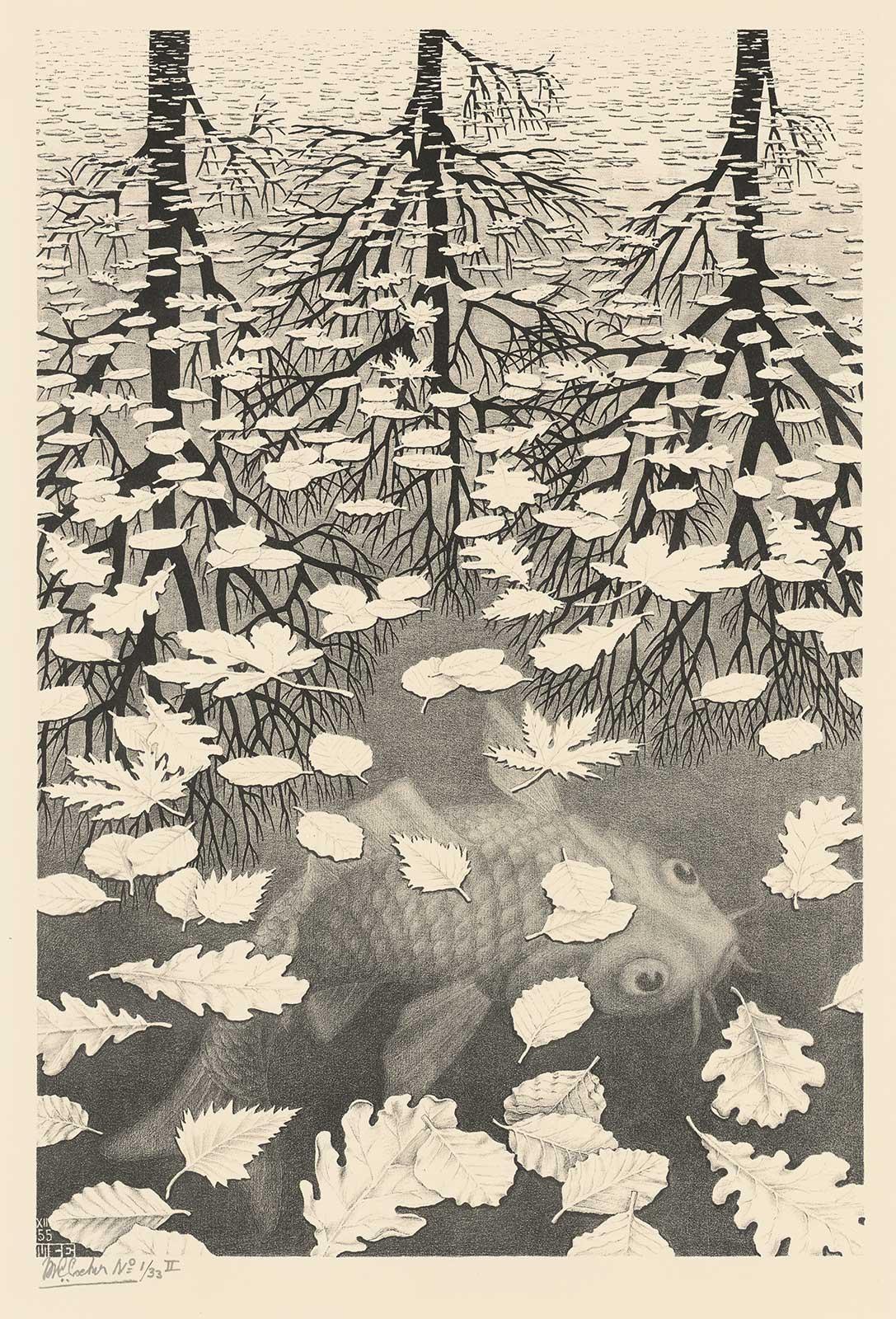

In the autumn and winter of 1930-1931, Escher developed the sketches he had made and photographs he had taken during his spring trip through the Italian provinces of Campanile and Calabria together with his friends Giuseppe Haas-Triverio, Roberto Schiess and Jean Rousset.* The woodcuts and lithographs that he produced bear the poetic names of the places he had visited: Palizzi, Morano, Pentedatillo, Stilo, Scilla, Tropea, Santa Severina, Rocco Imperiale, Rossano.** He was so impressed by the mountain village of Pentedattilo that he produced two woodcuts and a lithograph of it.
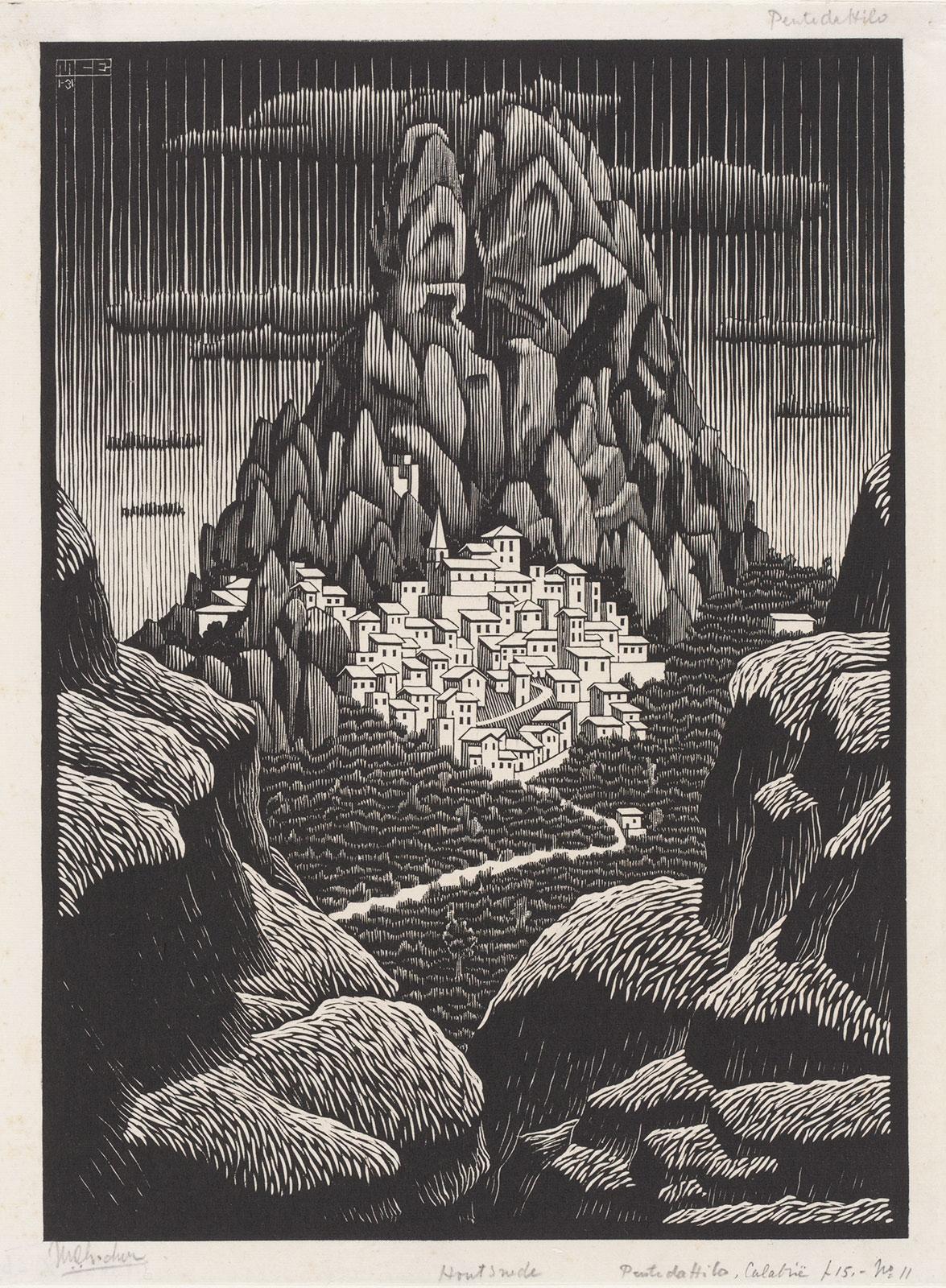
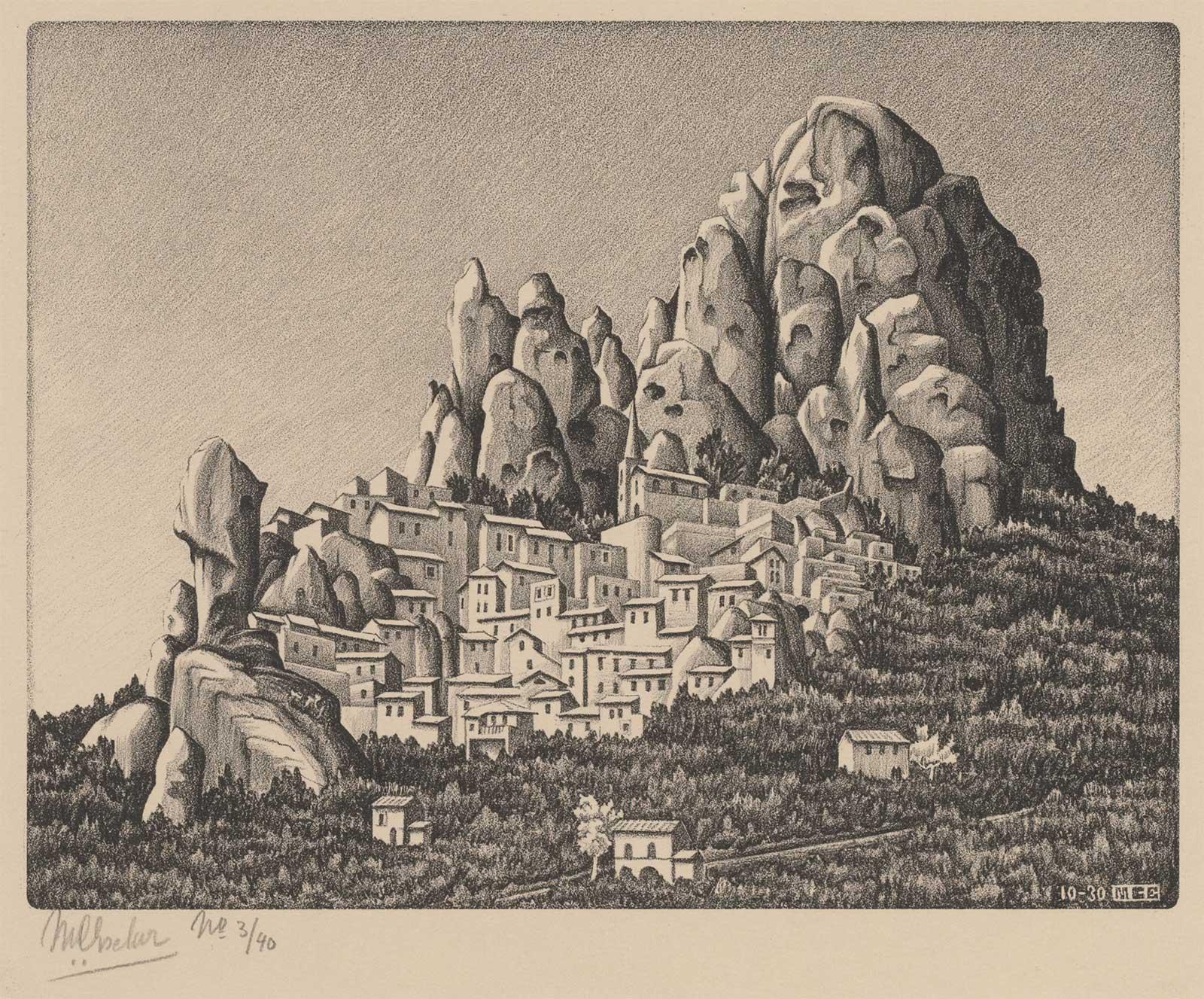
These two versions show the town from a distance with its houses standing out against the rocks that rise behind them. In the lithograph, Escher’s vantage point is slightly more to the right and Pentedattilo is depicted diagonally from below. Because this is a lithograph, the presentation of the town and the rocks is much softer than the stark black and white contrast of a woodcut. He did something similar in the lithograph of Santa Severina.
In the woodcut, Escher stands at eye level and straight in the middle. For this print, he took as his point of departure the photo featuring Jean Rousset. The rocks to the left and right mark the central point of the main subject. A zigzagging path leads the eye of the viewer towards it. See also the woodcut of Palizzi in which the buildings feature prominently too.
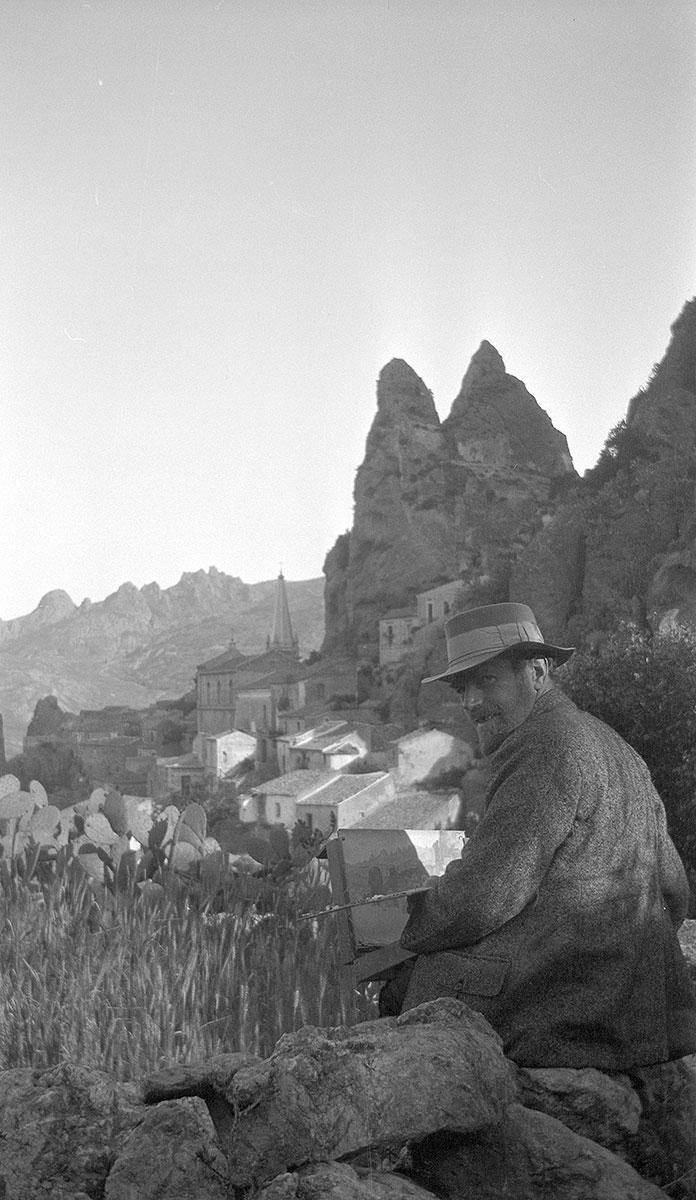
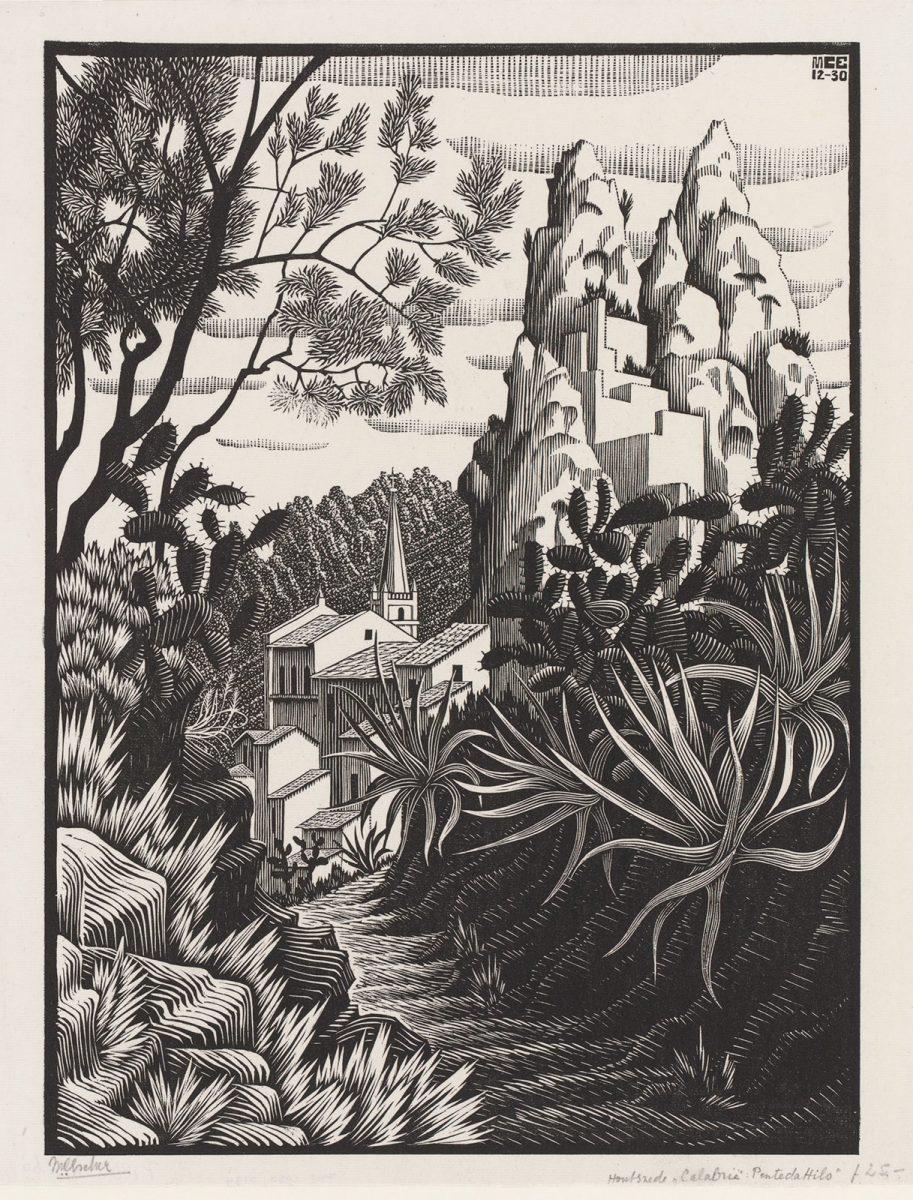
On 9 May 1930 Escher photographed his travelling companion Giuseppe Haas-Triverio. The similarities between the photo and the woodcut based thereon are overwhelming. Precisely the same perspective, the same focus on the subject. With one significant difference: Giuseppe has been removed from the picture. Escher also framed the subject slightly differently and prominently displayed plants to the left and right in the margin, thereby rendering the composition more exciting. He also makes the Pentedattilo rocks more jagged and the buildings in the rocks more dramatic. The upshot of these touches is a high-contrast print in which a mountain path lined with plants and shrubs leads to the village at the foot of the rocks.
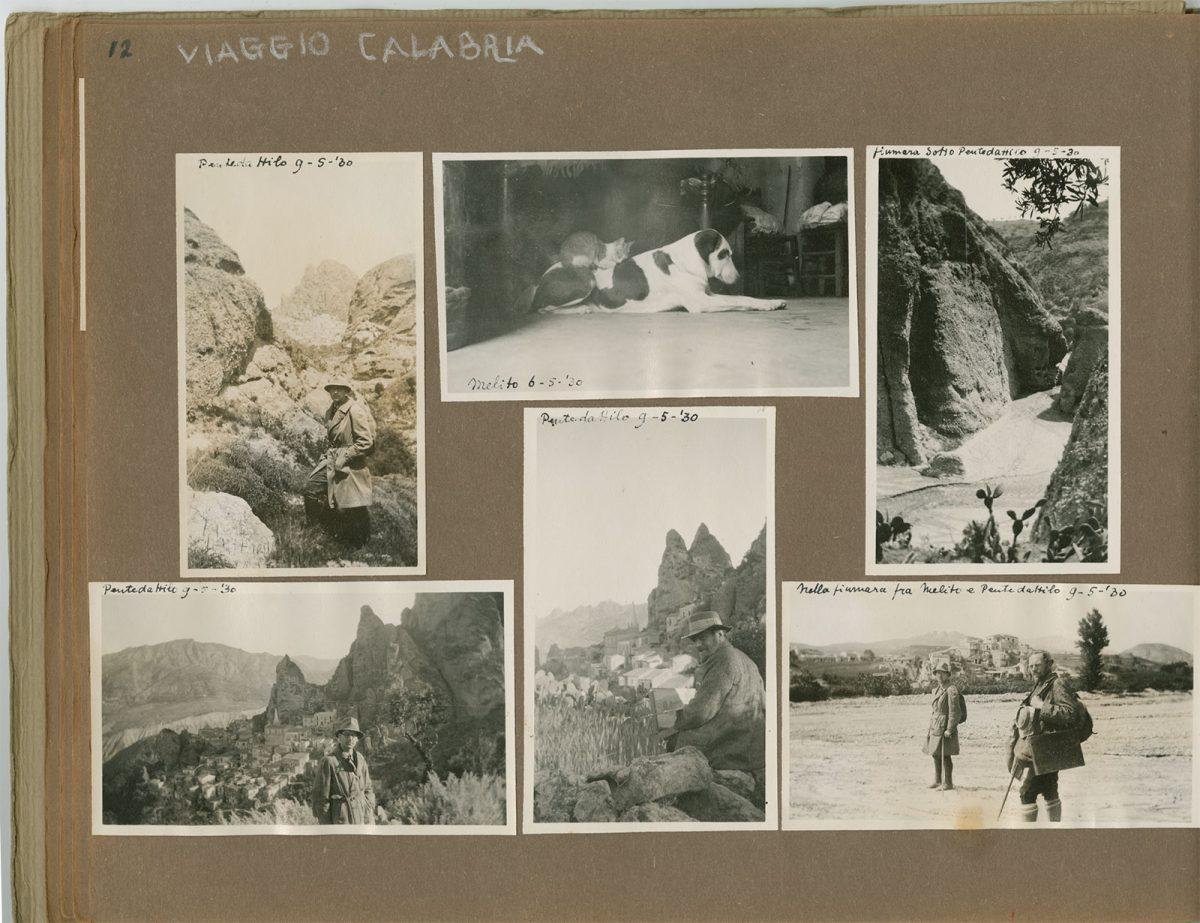
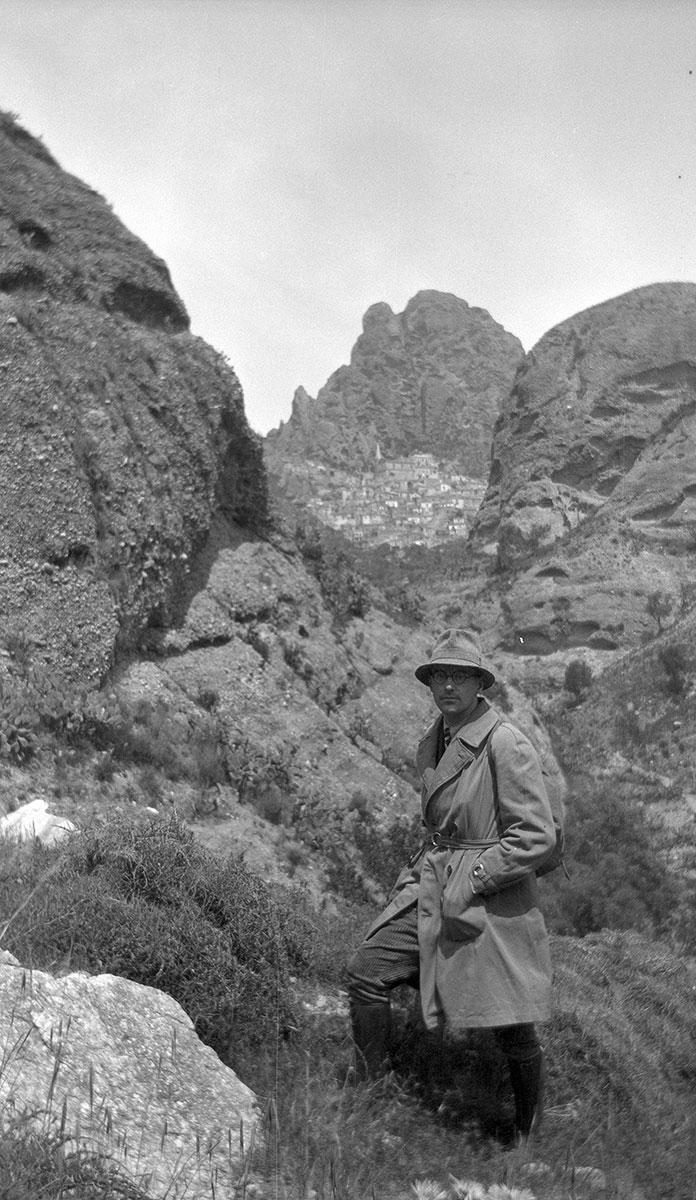
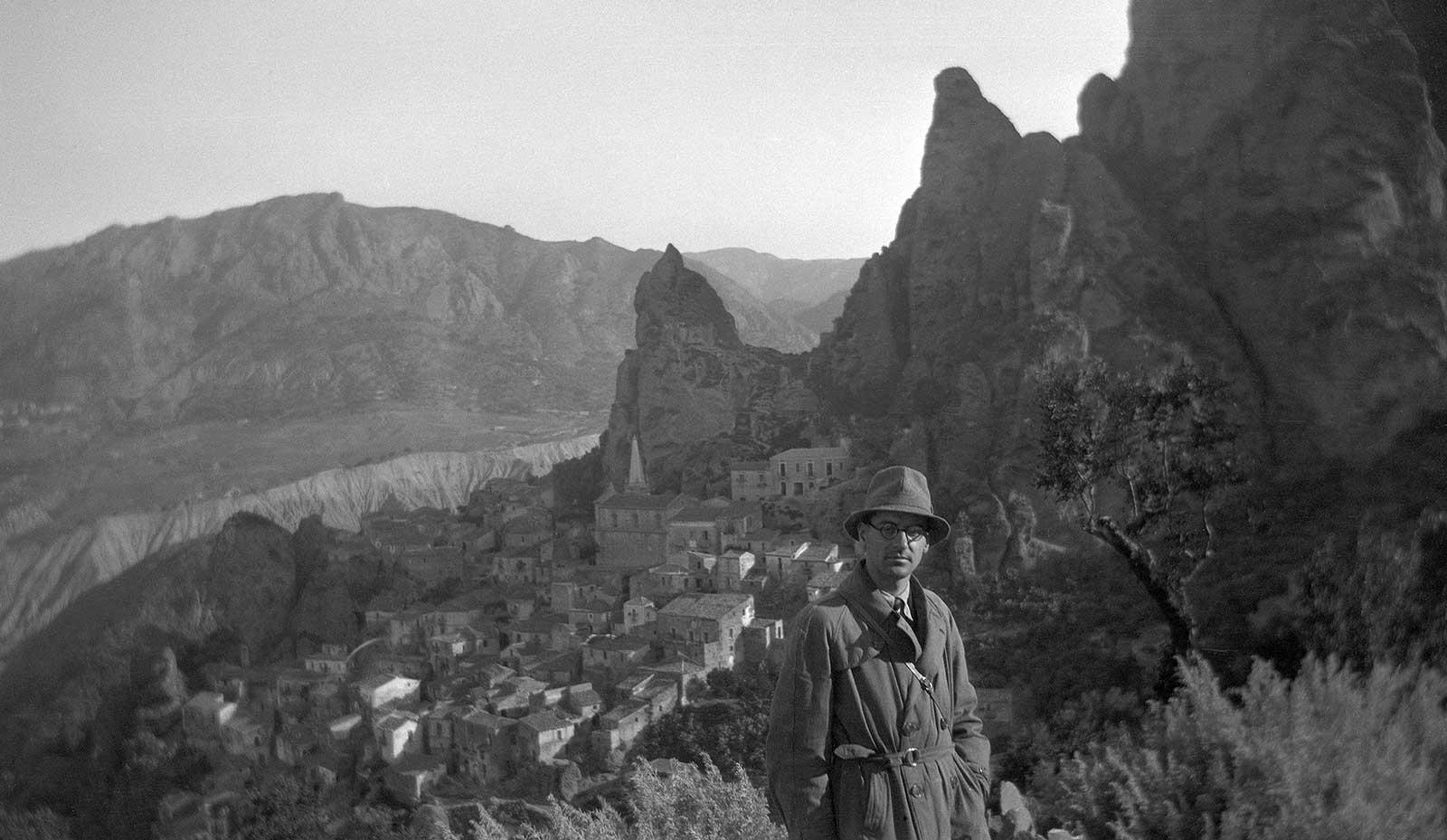
Pentedattilo is located in the Aspromonte mountain region in the southernmost part of Calabria. It has been a ghost town since the 1960s, in part due to the many earthquakes and landslides that have plagued the area. Escher clearly saw the drama of the rock formations in the background, but for visitors in the Middle Ages the spectacle must have been even more dramatic. After all, the formation once comprised five distinct peaks, resembling a hand thrusting upwards into the sky. Nowadays most of these rocks have collapsed and so the resemblance to fingers has been lost. In the seventh century AD the Greeks settled here and gave the town its name: penta + daktylos = five fingers. This became Pentedattilo in the local Greek-Calabrian dialect. As is the case in nearby Palizzi, this dialect, Griko, is still spoken here.
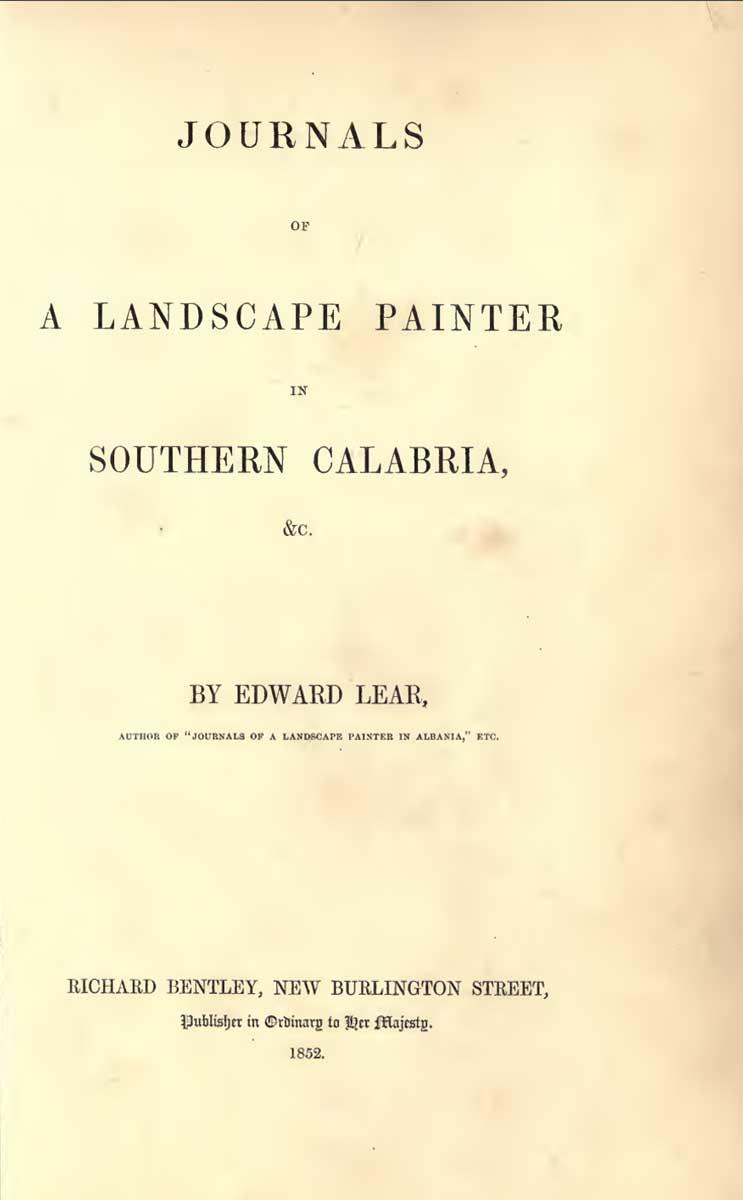
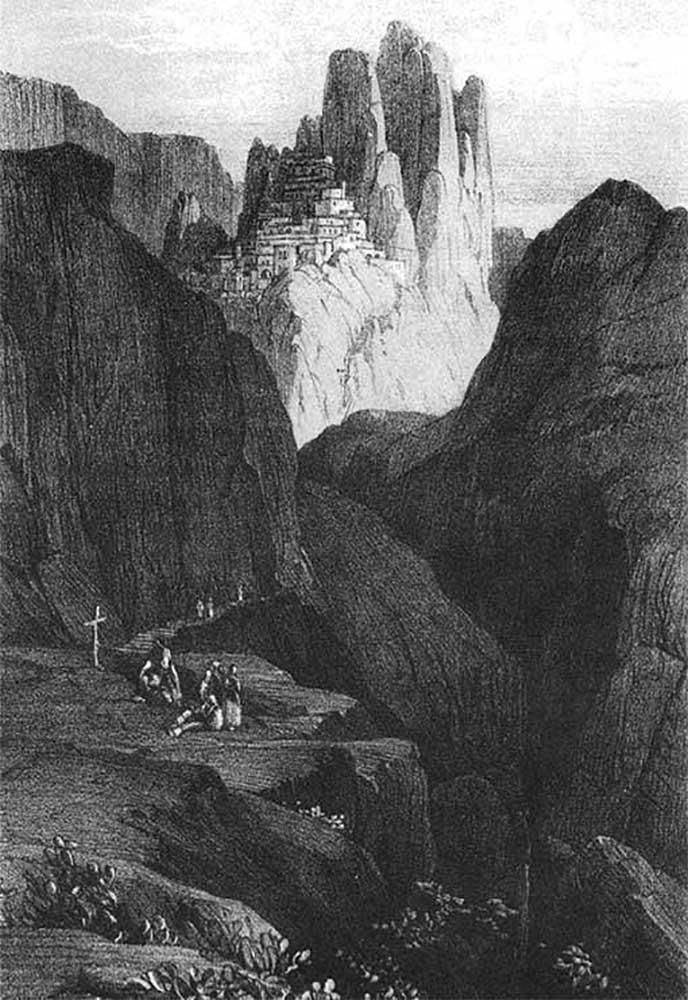
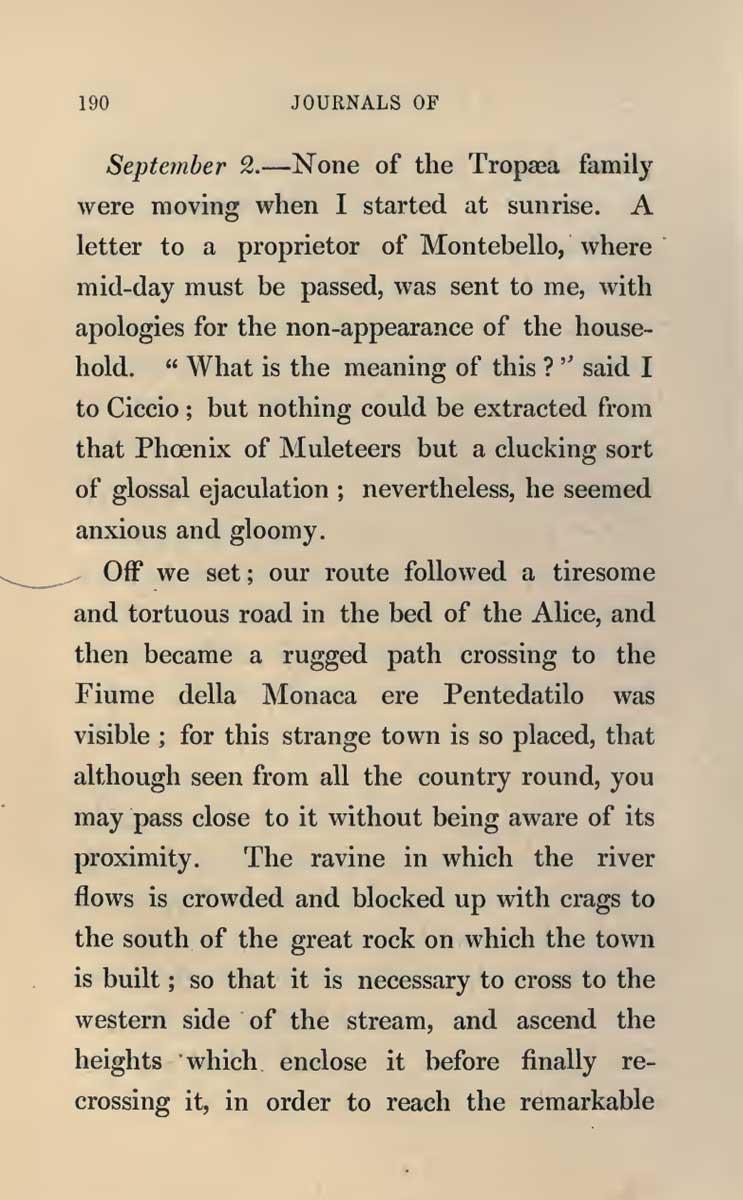
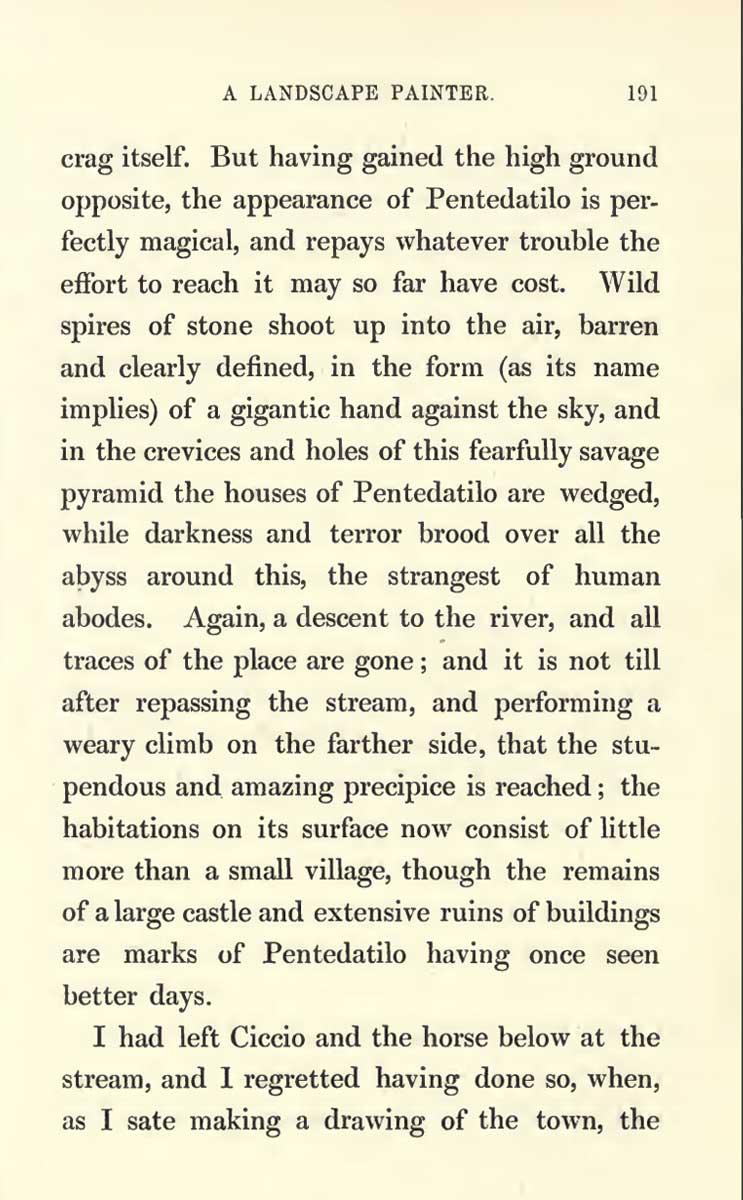
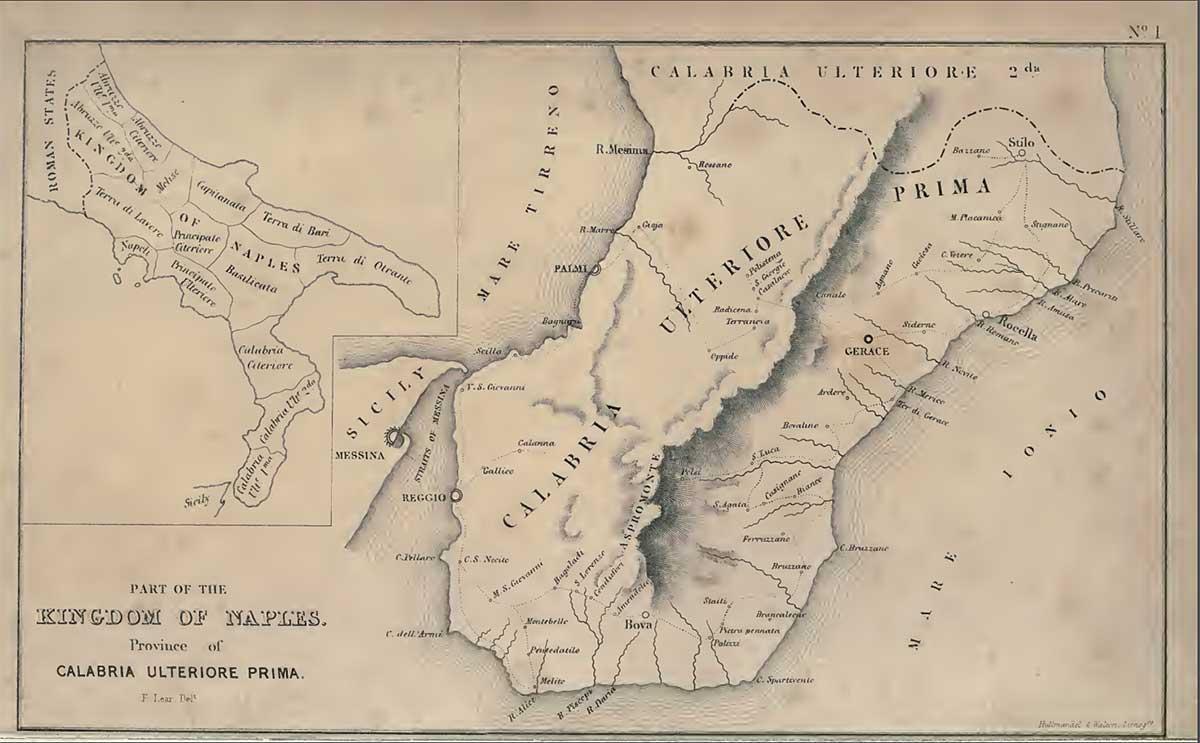
The British artist and writer Edward Lear saw the hand in 1847. His book Journals of a Landscape Painter in Southern Calabria includes a drawing and a description of the rock formation ***:
'The appearance of Pentedatilo is perfectly magical … Wild spires of stone shoot up into the air, barren and clearly defined, in the form (as its name implies) of a gigantic hand against the sky, and in the crevices and holes of this fearfully savage pyramid the houses of Pentedatilo are wedged, while darkness and terror brood over all the abyss around this, the strangest of human abodes.'
Map is loading...
Sources
[*] Wim Hazeu, M.C. Escher, Een biografie, Meulenhoff, 1998, p. 131
[**] Wim Hazeu, M.C. Escher, Een biografie, Meulenhoff, 1998, p. 144
[***] Edward Lear, Journals of a Landscape Painter in Southern Calabria, Richard Bentley, London, 1852, page 191
More Escher today

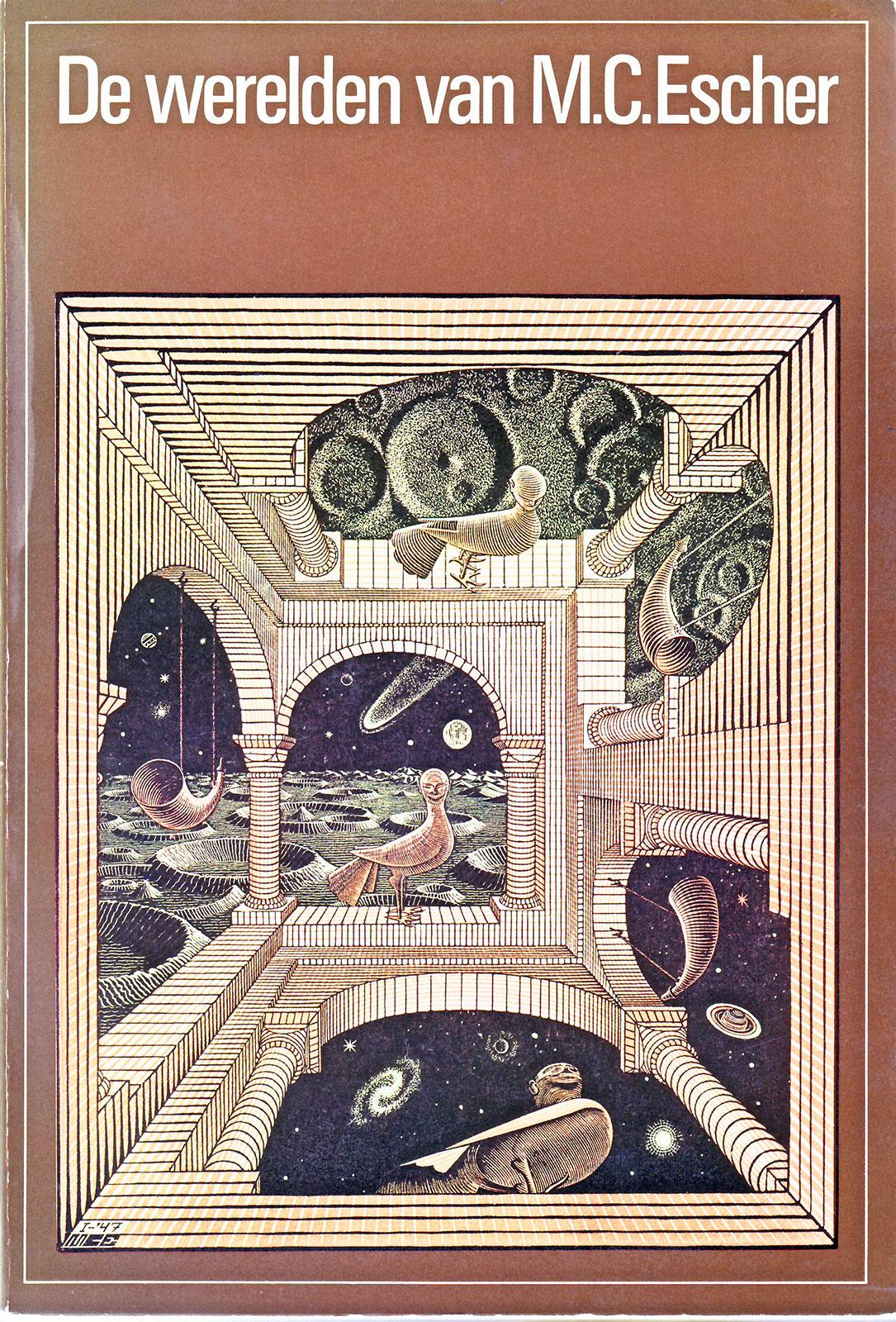
The Worlds of M.C. Escher

